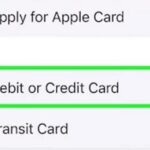This article will explain What Is Tax Refund Proc RFND DISB? Tax Refund Proc RFND DISB is a term that often perplexes many taxpayers. It typically appears on bank statements or financial transaction records. This term essentially signifies that a tax refund has been processed and disbursed to the taxpayer’s account. Understanding this process is crucial for taxpayers expecting refunds and for ensuring the legitimacy of the transactions recorded in their financial accounts.
Key Takeaways
- Tax Refund Proc RFND DISB refers to the process of disbursing tax refunds.
- It often appears on bank statements when a refund is issued.
- Key components include eligibility, processing time, and the method of disbursement.
- It’s vital to verify the legitimacy of such transactions.
What Is Tax Refund Proc RFND DISB?
“Tax Refund Proc RFND DISB” is a term commonly seen on bank statements, indicating that a tax refund has been processed and disbursed into your account. This typically occurs when the Internal Revenue Service (IRS) or state tax authority issues a refund, often via direct deposit, following the approval of your tax return.

Detailed Explanation of Tax Refund Proc RFND DISB
The Tax Refund Process
Tax refunds are issued when the amount of taxes paid exceeds the actual tax liability. This situation can occur due to various reasons, such as excessive withholding or eligible tax credits.
Understanding Eligibility for Tax Refunds
- Eligibility for a tax refund depends on individual tax situations.
- Factors influencing eligibility include income, tax deductions, and credits claimed.
The Timeline for Tax Refund Processing
- The processing time for tax refunds can vary.
- The Internal Revenue Service (IRS) typically issues refunds within 21 days of receiving a tax return.
Methods of Tax Refund Disbursement
There are several ways in which tax refunds are disbursed to taxpayers. These include direct deposit, paper checks, or a prepaid tax refund card. Direct deposit is the most popular and efficient method, often indicated by the term “Tax Refund Proc RFND DISB” on bank statements.
Direct Deposit for Refunds
- Direct deposit ensures quick and secure transfer of funds.
- Taxpayers must provide accurate bank account information to avoid delays.
Other Disbursement Methods
- Paper checks are an alternative but slower method.
- Prepaid tax refund cards are a convenient option for those without bank accounts.
Verification of Tax Refund Transactions

Importance of Verifying Transactions
Ensuring the legitimacy of tax refund transactions is vital. Taxpayers should be vigilant about transactions labeled “Tax Refund Proc RFND DISB” to prevent potential fraud.
Steps to Verify Tax Refund Transactions
- Check the amount against the expected refund.
- Contact the IRS or financial institution for discrepancies.
Common Issues with Tax Refund Proc RFND DISB
Delayed Tax Refunds
Delays in tax refunds can be caused by errors in tax returns, incomplete information, or processing backlogs at the IRS.
Resolving Delays in Refunds
- Review the tax return for accuracy.
- Contact the IRS for status updates.
Discrepancies in Refund Amounts
Sometimes, the refund amount received might differ from the expected amount due to adjustments made by the IRS.
Addressing Refund Discrepancies
- Understand the reasons for any adjustments.
- Consult a tax professional if needed.
Importance of Accurate Tax Filing
Impact on Tax Refunds
Accurate tax filing is crucial for ensuring correct refund amounts. Errors can lead to delays or incorrect refund amounts.
Best Practices for Tax Filing
- Ensure all income and deductions are accurately reported.
- Seek professional advice if uncertain about tax obligations.
Advanced Insights into Tax Refund Proc RFND DISB

Tax Refund Fraud and Identity Theft
Tax refund fraud and identity theft pose significant risks. Fraudsters may use stolen personal information to file fraudulent tax returns and redirect refunds.
Preventing Tax Refund Fraud
- Regularly monitor financial statements for suspicious activities.
- Use secure methods to file tax returns, such as IRS e-file.
Responding to Identity Theft
- Report to the IRS immediately if you suspect identity theft.
- Follow the IRS guidelines for identity theft victims.
Role of Technology in Tax Refund Processing
Advancements in technology have streamlined the tax refund process. Automated systems facilitate quicker and more accurate processing of refunds.
Improvements in Processing Efficiency
- Electronic filing and processing reduce the turnaround time for refunds.
- IRS systems now more effectively detect errors and fraud.
Technological Challenges and Solutions
- Cybersecurity is a major concern.
- Taxpayers should use secure internet connections and protect personal information.
Tax Refund Adjustments and Disputes
Reasons for Tax Refund Adjustments
The IRS may adjust refund amounts for various reasons, such as unreported income, incorrect tax credits, or math errors in the tax return.
Understanding IRS Adjustments
- Review IRS notices for explanations of adjustments.
- Compare the final refund amount with the initial tax return figures.
Handling Disputes with the IRS
- Gather all relevant documentation to support your case.
- Consider seeking assistance from a tax professional or the Taxpayer Advocate Service.
Tax Refund Tracking and Status Updates
Utilizing the IRS ‘Where’s My Refund?’ Tool
- Use the IRS ‘Where’s My Refund?’ tool for real-time updates on refund status.
- Have your tax return information handy for accurate tracking.
Dealing with Delays in Refund Status Updates
- Understand that some returns require additional review, causing delays.
- Contact the IRS if the status has not been updated beyond the standard processing time.
Advanced Tax Planning Strategies

Maximizing Tax Refunds
Strategic tax planning can maximize potential refunds. This involves understanding tax credits, deductions, and income adjustments.
Utilizing Deductions and Credits
- Identify all eligible deductions and credits.
- Keep abreast of changes in tax laws that may affect deductions.
Income Adjustments and Tax Implications
- Consider the timing of income and deductions to optimize tax liability.
- Understand the implications of different types of income on tax liability.
Long-Term Tax Planning and Refunds
Future Financial Planning and Taxes
- Incorporate tax planning into long-term financial goals.
- Consider the impact of major life events on tax obligations.
Preparing for Future Tax Seasons
- Maintain organized financial records.
- Stay informed about tax law changes and updates.
Conclusion
In conclusion, understanding “Tax Refund Proc RFND DISB” is essential for taxpayers. It’s a process that signifies the disbursement of tax refunds, typically via direct deposit.
Accurate tax filing and vigilant verification of these transactions are key to ensuring a smooth refund process. Remember, if there are discrepancies or delays, it’s important to take prompt action to resolve them. This understanding aids in effective tax management and financial planning.
Frequently Asked Questions
Are there any special considerations for tax refunds if I have filed an amended return?
If you filed an amended return, be aware that processing can take significantly longer – up to 16 weeks. You can track the status of your amended return using the ‘Where’s My Amended Return?’ tool on the IRS website.
What if I receive a tax refund that I did not expect or is in the wrong amount?
If you receive an unexpected refund or the amount differs significantly from what you expected, do not spend the money. Contact the IRS immediately as it could be a mistake or a sign of identity theft.
How can I ensure faster processing of my tax refund?
To ensure faster processing of your tax refund, file your tax return electronically and opt for direct deposit. Also, make sure your return is accurate and complete to avoid delays due to IRS corrections or the need for additional information.
Can I change the account where my tax refund is deposited after filing?
Once your tax return is filed, you cannot change the bank account for direct deposit. If the IRS cannot deposit the refund due to incorrect account information, they will mail you a check to the address on your tax return.
A multifaceted professional, Muhammad Daim seamlessly blends his expertise as an accountant at a local agency with his prowess in digital marketing. With a keen eye for financial details and a modern approach to online strategies, Daim offers invaluable financial advice rooted in years of experience. His unique combination of skills positions him at the intersection of traditional finance and the evolving digital landscape, making him a sought-after expert in both domains. Whether it’s navigating the intricacies of financial statements or crafting impactful digital marketing campaigns, Daim’s holistic approach ensures that his clients receive comprehensive solutions tailored to their needs.









